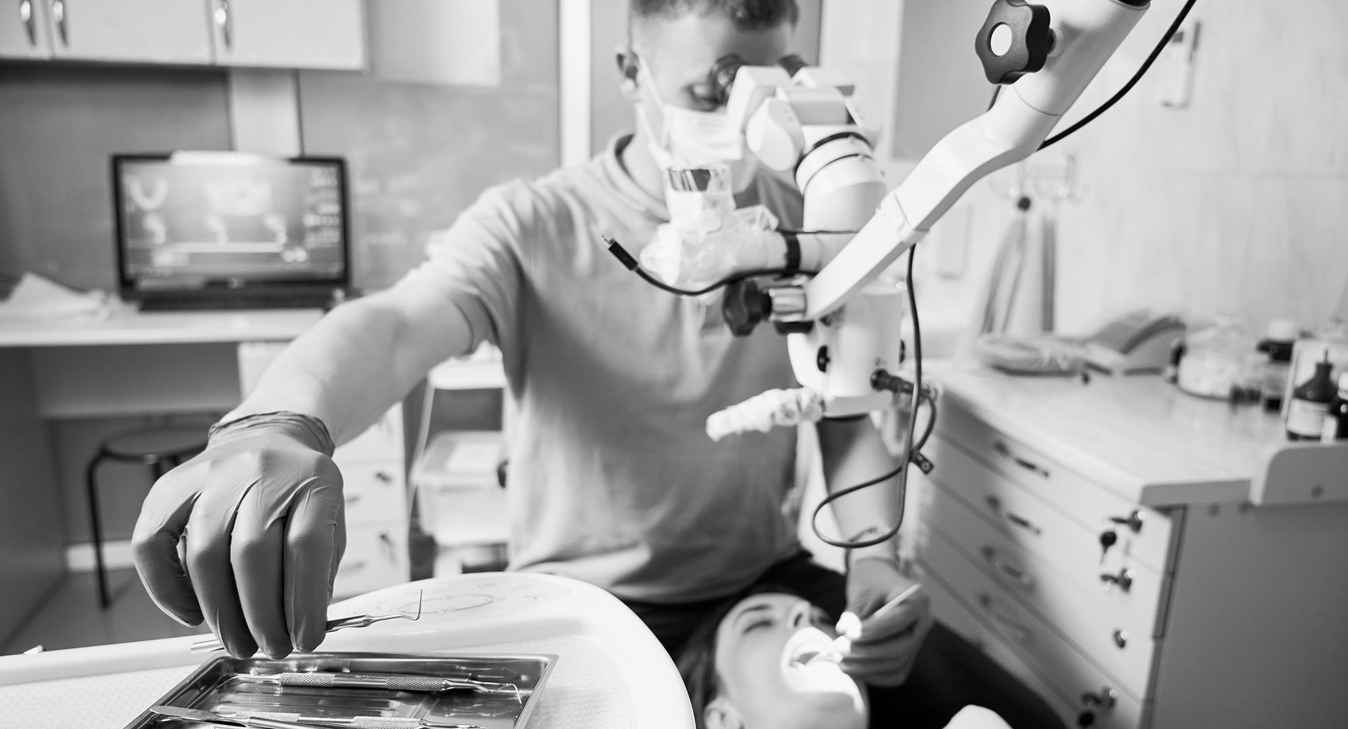Why Considering a Root Canal Treatment
in Argentina or Buenos Aires?
Sometimes you don’t have a choice to undergo a root canal treatment. But when you need to, being abroad in Latin-America or Argentina, Buenos Aires might be one of the best places to carry out your treatment. Below we explain why and what to take into account when choosing to undergo root canal therapy abroad.
What You Need to Know About Root Canal Treatments Abroad.
If you’re in Argentina and think you might need a root canal, we can help connect you with a local clinic for a first intake. These clinics are familiar with treating international visitors and can help assess your needs in a calm, professional setting.
- When I Need a Root Canal
- Procedure for Root Canals
- Costs of Root Canals Abroad


When Do I Might Need Root Canal Treatment?
Common signs like pain or sensitivity often lead people to explore root canal treatment. We’ve listed the typical symptoms below. If you’re unsure, you can request a free, no-obligation intake with one of the clinics we work with.
- Severe Tooth Pain
- Swelling or Tender Gums
- Presistent Pimple on Gums
- Discoloration of Tooth
Symptoms for Root Canal Treatments.
In the previous section, we briefly touched on symptoms that might indicate you will need to undergo a root canal treatment. Here we will discuss these and other in more detail.
Severe and Sharp Tooth Pains
If you’ve noticed pain when chewing or putting pressure on a tooth, it could be linked to inflammation or irritation inside the tooth. While only a dental professional can determine the cause, many people in similar situations choose to speak with a clinic to explore their options. Early care can often help prevent discomfort from getting worse.
Sensitivity to Hot or Cold
When a tooth stays sensitive to heat or cold long after the source is gone, it might be a sign of deeper changes inside the tooth. While this doesn’t always mean a root canal is needed, it’s something worth mentioning during an intake. A dental professional can assess what’s going on and guide you from there.
Darkened or Discolored Tooth
A tooth that has changed color may indicate something has shifted beneath the surface. This can sometimes happen if the inner tissue is no longer active. It’s one of several signs people may notice before seeking restorative care. A dentist can take a closer look and discuss possible next steps.
Swollen or Tender Gum Tissue
If there’s swelling, tenderness, or a small bump near a tooth, it could be a sign of irritation or a local infection. While it may not always be serious, it’s a good idea to bring it up with a dental clinic during a consultation. They can help figure out what’s happening and whether treatment is needed.
Recurring Pimple on the Gums
Some people notice a small bump on the gums that comes and goes or releases fluid. This may suggest an ongoing issue near the root of a tooth. It’s worth having checked by a dental professional to better understand what’s going on and what options might be available.
Root Canal Treatment Procedures Explained.
Root canal treatment involves several steps, and we’ve put together a simple timeline to give you an idea of what’s typically involved. Below, each stage is explained in more detail — or watch our short video for a quick visual overview.
Steps of Root a Canal Treatments.
Before, During and After.
A root canal involves different stages, each requiring specific steps from both you and your endodontist, a specialist in root canal treatments. We guide you through the entire process. It starts with relieving your pain as quickly as possible as we further engage in other steps.
Immediate Pain Management
Tooth pain can be frustrating — especially if you’re traveling. While it won’t solve the problem, using general pain relievers and avoiding foods that trigger discomfort (like something very hot or sugary) might help for a little while. If the pain sticks around, it’s worth reaching out to a local clinic to talk things through and see what your options are.
An Initial Consultation
If you’re dealing with dental discomfort, a consultation is often the first step. It gives the dentist a chance to take a closer look — sometimes with an X-ray — and understand what might be going on. From there, they can talk you through possible next steps that fit your situation.
Overview of The Procedure
A root canal might sound like a big deal, but it’s actually a pretty common way to save a tooth that’s been affected by deeper issues inside. The goal is to clean out the space, seal it up, and help get the tooth working comfortably again. The clinic will explain what’s involved so you feel more comfortable with the process.
Expectations During Procedure
If you do go ahead with a root canal, the area will be numbed so you won’t feel anything during the treatment. Then the dentist carefully removes the affected tissue, cleans the space, and seals it. It can sometimes be done in one visit — sometimes two or three. You’ll be guided through each step so you know what to expect.
Amounts and Session Duration
Not every case is the same — some root canals are straightforward and quick, others need a bit more time. Depending on the complexity, the dentist might schedule one or more appointments. They’ll walk you through the timeline once they’ve seen your tooth and assessed what’s needed.
Aftercare and Instructions
After treatment, it’s good to go a little easy on the area — especially until your tooth is fully restored. Keeping up with brushing, flossing, and following any care tips from your dentist can make a big difference in healing and long-term comfort.
Managing Your Discomfort
Some tenderness is completely normal once the numbing wears off. Your dentist may recommend something to help with that, and possibly something to support healing. Just be sure to follow their advice and check in if anything doesn’t feel right — it’s all part of making sure things go smoothly.
Root Canal Costs in Buenos Aires.
Argentina vs. The US and Canada.
Costs for root canal treatment can vary quite a bit depending on where you are. In Argentina, many people find that the overall price — including the restoration — is lower compared to countries like the U.S. or Canada. Below you’ll find a general example to give you an idea, but keep in mind: the actual cost depends on your specific case and what’s involved.
| Root Canal Treatment Procedure | US & Canada | Argentina |
|---|---|---|
| Initial Consultation | $100-$250 | $50-$100 |
| Dental X-rays | $50-$200 | $20-$50 |
| Local Anesthesia | Included | Included |
| Root Canal Treatment (Anterior Tooth) | $600-$1,200 | $150-$400 |
| Root Canal Treatment (Premolar) | $700-$1,400 | $200-$500 |
| Root Canal Treatment (Molar) | $1,000-$1,800 | $300-$800 |
| Post-Treatment Filling | $150-$400 | $50-$150 |
| Total Cost of Root Canal Treatment | $900-$3,600 | $320-$1,500 |

A Foreigner Guide for Dental Care Abroad.
If it’s your first time exploring dental care outside your home country, it’s completely normal to have questions — especially about safety, cost, and what to expect. That’s why we’ve put together a helpful guide for international patients. It walks you through how to find reliable care and feel supported throughout your journey.
How to Choose a Clinic
For Your Root Canal Treatment?
Finding the right clinic can feel tricky, especially for more complex treatments. To help you make an informed choice, we’ve created a simple guide on what to look for in a safe and qualified dental clinic.
Detailed Guide
To Choose a Dental
Clinic Abroad
Previous Results on Root Canal.
When it’s time to look for a clinic for root canal treatment, one of the most helpful things you can do is check how past patients have experienced their care. That can be tricky, since root canals are often just one part of a bigger treatment plan and not always mentioned on their own.
Still, there are ways to get a better picture. Look for clinics with a clear track record in performing root canals and read through patient reviews carefully. Feedback that mentions smooth recoveries or no complications in the days after treatment can give you valuable insight into the clinic’s experience and consistency.
Carried Out By An Endodontist.
We often hear comments like, “The dentist seemed skilled and the treatment went well, but after a few days the pain returned and I had to go back.” In most of these cases, it’s not a lack of dedication — it often comes down to how much experience the dentist has with root canal therapy. These procedures are complex and require a highly precise approach. We’ve seen that when root canals are performed by general dentists, there’s a higher chance of needing rework — often due to missed canals or incomplete cleaning of infected tissue.
- Choose a Certified Endodontist
- Reputation on Root Canal
- Assure Diagnosis with X-Rays
- Ask Detailed Explanations on RCT
How To Plan Your Trip Combining a Root Canal Treatment.
Once you decide on a root canal abroad, key factors can help ensure a smooth experience. This section covers important details to help you prepare and make the right choice.
Choosing the Right Clinic
Choosing where to go for treatment is an important first step. Look for a clinic with dentists who regularly perform root canals and have positive feedback from past patients. Reading reviews and looking at real experiences can help you feel more confident and better informed before making a decision.
Understanding the Costs
Before you book anything, ask the clinic for a clear cost breakdown. Some offer packages that include consultations, imaging, and follow-ups, which can help with budgeting. Knowing exactly what’s included gives you peace of mind and helps avoid unexpected expenses during your stay.
Scheduling Your Visit
Root canals often take more than one visit, so it’s a good idea to confirm the timeline with the clinic. Planning enough time for appointments and healing can make your trip less stressful. A clinic that offers flexible scheduling can help you balance treatment with time to rest — or explore.
Preparing for Recovery
Some sensitivity after a root canal is completely normal. Plan for a few quieter days after treatment, and try to stay near the clinic just in case you need anything. Knowing where to find a nearby pharmacy or a quiet spot to recover can help make things easier while you’re abroad.
Ensuring Safe Treatment
Your health and safety should always come first. Look for a clinic that follows strong sterilization protocols and uses modern equipment. Many trusted clinics in Argentina work to international standards, giving you peace of mind throughout your treatment process.
Planning for Aftercare
A good aftercare plan helps protect your treated tooth and supports long-term results. Ask the clinic about follow-up care and whether they offer remote support. Having clear instructions and a way to stay in touch can make a big difference once you’re back home.
Why Patients Choose Teeth Traveler.
Affordability is something we care deeply about — but never at the expense of safety or quality. The clinics we work with focus on treatments carried out by accredited specialists, often using advanced techniques designed to prioritize patient comfort. It’s about finding care that’s both accessible and thoughtfully delivered.
Discover Why
Patients Choose Us
Root Canal Treatment Prices.
Safety Uncompromised.
Here’s a general price overview for root canal treatments offered by the dentists in our network. Since these are often done as standalone procedures, the estimates tend to be quite accurate. A detailed quote will be given after your consultation.
Root Regular
Treatment duration between 1-2 hoursSame Day Treatment
-
Checkup | Scan | Cleaning
-
Root Canal Treatment
-
Online Aftercare
-
Digital Treatment Document*
-
100% Covered
*Digital Document for Dentist at Home
A Direct Agreement with The Dentist
Root Smile
Treatment duration between 2-4 hoursSame Day Treatment
-
Root Regular
-
Essential Care Treatment*
-
Professional Whitening
-
Follow-up Dentistry at Home
-
Partially Covered
*Includes Fillings for Small Caries
A Direct Agreement with The Dentist
Root Makeover
Treatment duration between 3-5 hoursSame Day Treatment
-
Root Regular
-
Essential Care Treatment
-
Smile Makeover Light*
-
Follow-up Dentistry at Home
-
Partially Covered
*Includes a Whitening and Bondings
A Direct Agreement with The Dentist
Reviews of Root Canal Treatments.
In this section we highlight some experiences of patients who choose to have their endodontic treatment done via dentists in our network. If you are curious to also look at some other reviews, please visit our separate review section.






Plan an Intake. Online. For Free.
Since 2013, we’ve helped connect patients with clinics experienced in root canal care. If you’d like to explore your options, you can schedule a free online intake to discuss your needs and ask questions — no obligation.
Frequently Asked Questions (FAQs) on Root Canal Treatment.
Commonly asked questions about root canal treatments are listed in this section. In case your question is not there, please do not hesitate to ask it to us below.
How much is a root canal in Argentina?
A root canal in Argentina typically costs between $150 and $300, depending on the complexity of the case and the clinic’s location. In Buenos Aires, high-quality dental care is available at a fraction of the cost compared to the U.S., making Argentina an affordable option for those seeking effective root canal treatment abroad.
Is it safe to fly with root canal?
Yes, it is generally safe to fly after a root canal, but it’s recommended to wait at least 48 hours to minimize discomfort. This waiting period allows any inflammation or sensitivity to subside, reducing the risk of pain during your flight. If you experience significant discomfort, consult your dentist before traveling.
Why you shouldn't fear a root canal?
You shouldn’t fear a root canal because modern dental techniques and anesthesia make the procedure virtually painless. Root canals are performed to relieve the pain caused by infected teeth, not to cause it. In Buenos Aires, skilled dentists use the latest technology to ensure your comfort, providing a safe and effective treatment that preserves your natural tooth.
Does altitude affect root canal?
Yes, altitude can affect a root canal. Changes in atmospheric pressure at high altitudes can cause air pockets in a treated tooth to expand, leading to discomfort or sensitivity. However, this is rare and usually temporary. Properly sealed root canals performed by skilled dentists in Buenos Aires minimize the risk of such issues during altitude changes.
What is worse, a crown or root canal?
A root canal is generally more invasive than a crown. A root canal involves removing infected tissue from inside the tooth to eliminate pain and infection, preserving the natural tooth. A crown, on the other hand, is less invasive and involves reshaping and covering the tooth’s surface to restore its function and appearance. Both procedures aim to save the tooth, but the root canal addresses deeper issues.
Is there any alternative to root canal treatment?
Yes, alternatives to root canal treatment include pulp capping, pulpotomy, or tooth extraction. Pulp capping involves placing a protective layer over the pulp to allow it to heal, while pulpotomy removes part of the pulp in cases of severe decay. Extraction is considered when the tooth is too damaged to be saved. The best option depends on the tooth’s condition and the dentist’s recommendation.
What can I do if I cannot afford a root canal?
If you cannot afford a root canal, consider options such as visiting a dental school, where procedures are performed at a reduced cost by supervised students. Public clinics and government-subsidized healthcare plans may also offer affordable treatments. Additionally, many dental offices provide financing options to help manage the cost of care.
Ask Your Question
At Teeth Traveler, we’re here to share helpful information — not to offer medical advice. This information on this page is for general informational purposes only and does not constitute medical advice, diagnosis, or treatment. Teeth Traveler is not a healthcare provider and does not offer medical services. The clinics listed on our platform operate independently and are responsible for the care they provide. While we aim to offer helpful guidance, readers are encouraged to consult directly with licensed dental professionals before making healthcare decisions or pursuing treatment abroad. No rights may be derived from the information provided on this page. For more details, check our disclaimer and terms of use.
